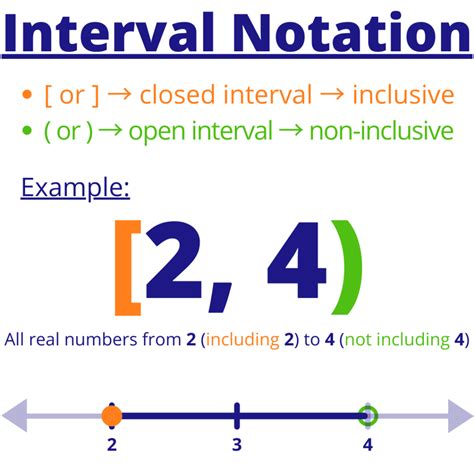Interval arithmetic, often perceived as a nuanced branch of mathematics, provides a critical foundation for computational precision and handling uncertainty. While traditional arithmetic focuses on precise values, interval arithmetic operates on ranges or intervals of numbers. This shift, from exact numbers to intervals, opens up a world of applications in engineering, numerical methods, and even in our day-to-day computations. At its heart, interval arithmetic deals with operations on intervals instead of point values. For instance, rather than treating a value as exactly 7, one could consider it as lying between 6.9 and 7.1. This nuance allows computations to account for and manage uncertainties, which are pervasive in real-world measurements and calculations.
One fundamental aspect of interval arithmetic is its ability to maintain bounds on results through operations. For multiplication, adding, or even complex functions like trigonometry, intervals help us understand the range within which the true result lies. Take the case of squaring an interval (x * x) versus the interval squared (x^2). When x represents an interval, the multiplication involves calculating all pairs in the interval to get the resulting range. This idea is pivotal in applications such as numerical analysis and complex simulations where precision and error bounds are crucial. This difference is mainly in how multiplication is executed. In interval arithmetic, x * x would imply multiplying every element in the interval x, leading to a comprehensive range, whereas x^2 could be interpreted as squaring each point within the interval, yielding potentially different bounds.
The discussion in the comments of Hillel Wayne’s article highlighted the complexities and subtleties of interval arithmetic in practice. For instance, the distinction between pointwise squaring a function on an interval compared to cross products or set multiplications illustrates the depth of interpretation. Civilized and Twisol’s dialogue underscores the importance of recognizing different contexts and notations. Cross products in this arithmetic mean considering all possible combinations within the interval. Interval arithmetic’s approach to handling error propagation diverges significantly from classical uncertainty analysis. In engineering, for instance, affine arithmetic—a refined take on interval arithmetic—addresses some of these limitations by maintaining linear correlations between variables. This ensures more precise bounds but at the cost of increased computational complexity and resources.
Another critical point is understanding the real-world implications of interval arithmetic in machining and tolerances. When manufacturing components, exact measurements are virtually impossible; hence, we rely on tolerances and precision ranges. Interval arithmetic provides a systematic way to compute these tolerances. For example, if a machine part must fit within a certain specification, interval arithmetic can model the cumulative effect of each manufacturing step’s variability, ensuring components fit together as intended. Techniques like affine arithmetic and modal interval arithmetic come into play here, often preferred in engineering due to their ability to handle dependencies between intervals more effectively than classic interval arithmetic.
A fascinating extension of this concept is in probabilistic measures and computer graphics. The supports of random variables mentioned by GrantMoyer highlight that interval arithmetic is not just about fixed bounds but also about understanding relationships within data sets. In probabilistic terms, the intervals can represent likely ranges of outcomes, which are essential for simulations and modeling. In computer graphics, for example, interval arithmetic can simplify rendering by efficiently computing bounding volumes and collision detection algorithms. Mesh simplification or subdivision also leverages interval techniques to maintain geometric constraints while reducing computational load.
But interval arithmetic isn’t without its challenges. One significant issue is the notion of overestimation, where the resulting intervals become excessively conservative. This can make the intervals grow quickly and become less useful. Different techniques have been developed to tackle this, including interval mincing and reduced affine arithmetic. These aim to subdivide intervals or reduce dimensions, making the arithmetic operations more manageable and the intervals tighter without unduly losing precision. Moonchild’s comments about interval mincing offer a practical insight into how complex relationships in intervals can be modeled by breaking them down into simpler, more manageable sub-intervals. This process, while computationally intensive, ensures that the bounds remain as tight and informative as possible without over-conservatism.
The application of interval arithmetic in software engineering and dynamic languages is particularly interesting. As Bjourne pointed out, tagging intervals can resolve the overdetermination problem, essential when dealing with ranges in dynamic compilers. This notion is echoed in the domain of databases and search algorithms, where interval arithmetic ecosystems like ClickHouse and others employ complex interval calculations to optimize queries, index searches, and data grouping. These real-world applications underscore the practical significance of interval arithmetic beyond theoretical constructs. Innovations like this, as shown by index analysis in ClickHouse, can dramatically improve performance and accuracy in data-driven applications, proving how integral this arithmetic is to efficient data management and retrieval strategies.
In summary, interval arithmetic bridges a vital gap between exact mathematics and practical computational needs. While it introduces complexity, its benefits in precision, uncertainty management, and robust error analysis make it indispensable. From engineering and probabilistic models to software optimization and real-time computations, interval arithmetic offers tools and techniques that are integral to modern computational challenges. Its continued evolution and integration into various scientific and industrial applications highlight its relevance and utility in an increasingly data-driven and precision-oriented world. As fields like machine learning and AI grow, understanding and leveraging interval arithmetic will become even more critical for developing reliable, accurate, and efficient systems.


Leave a Reply